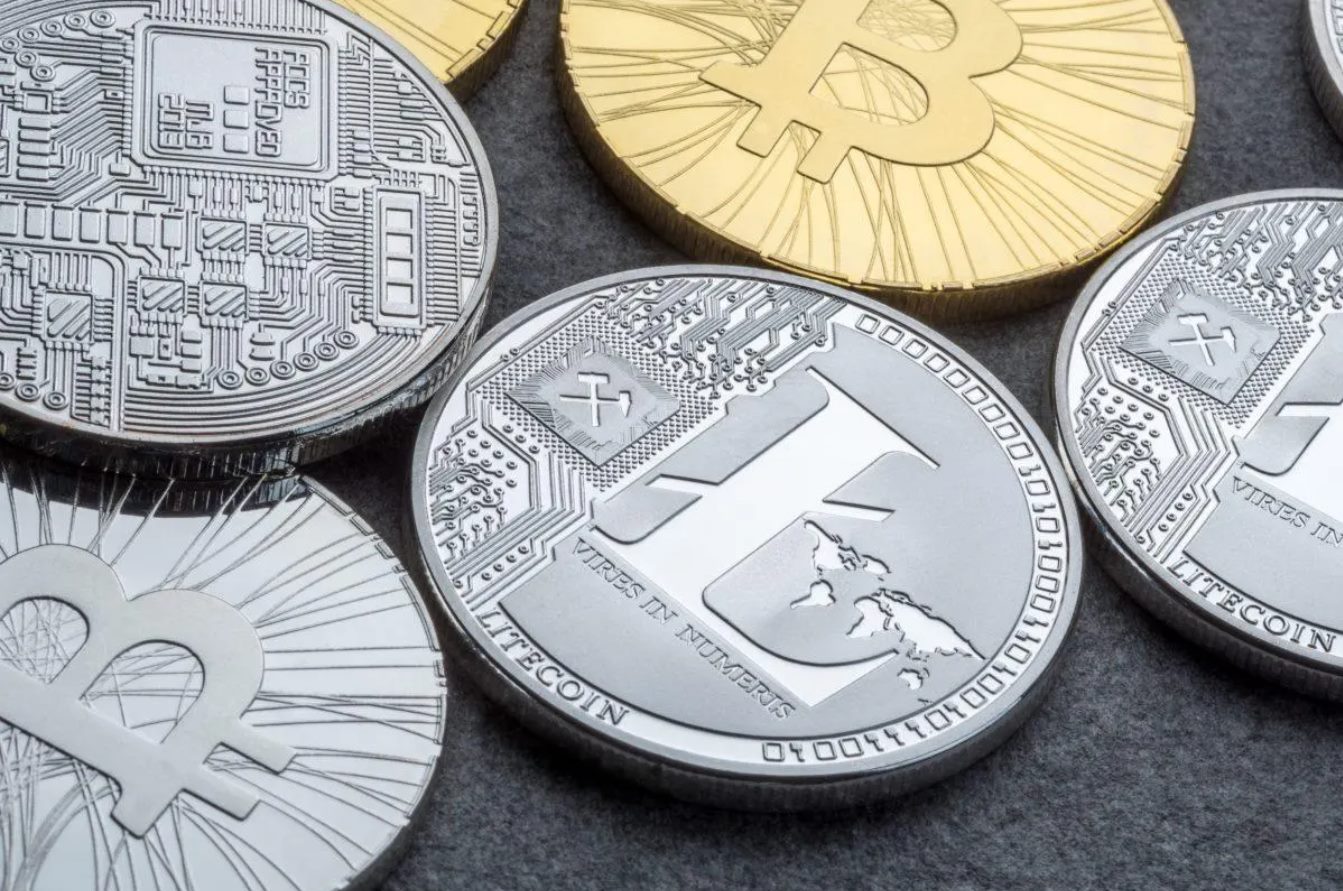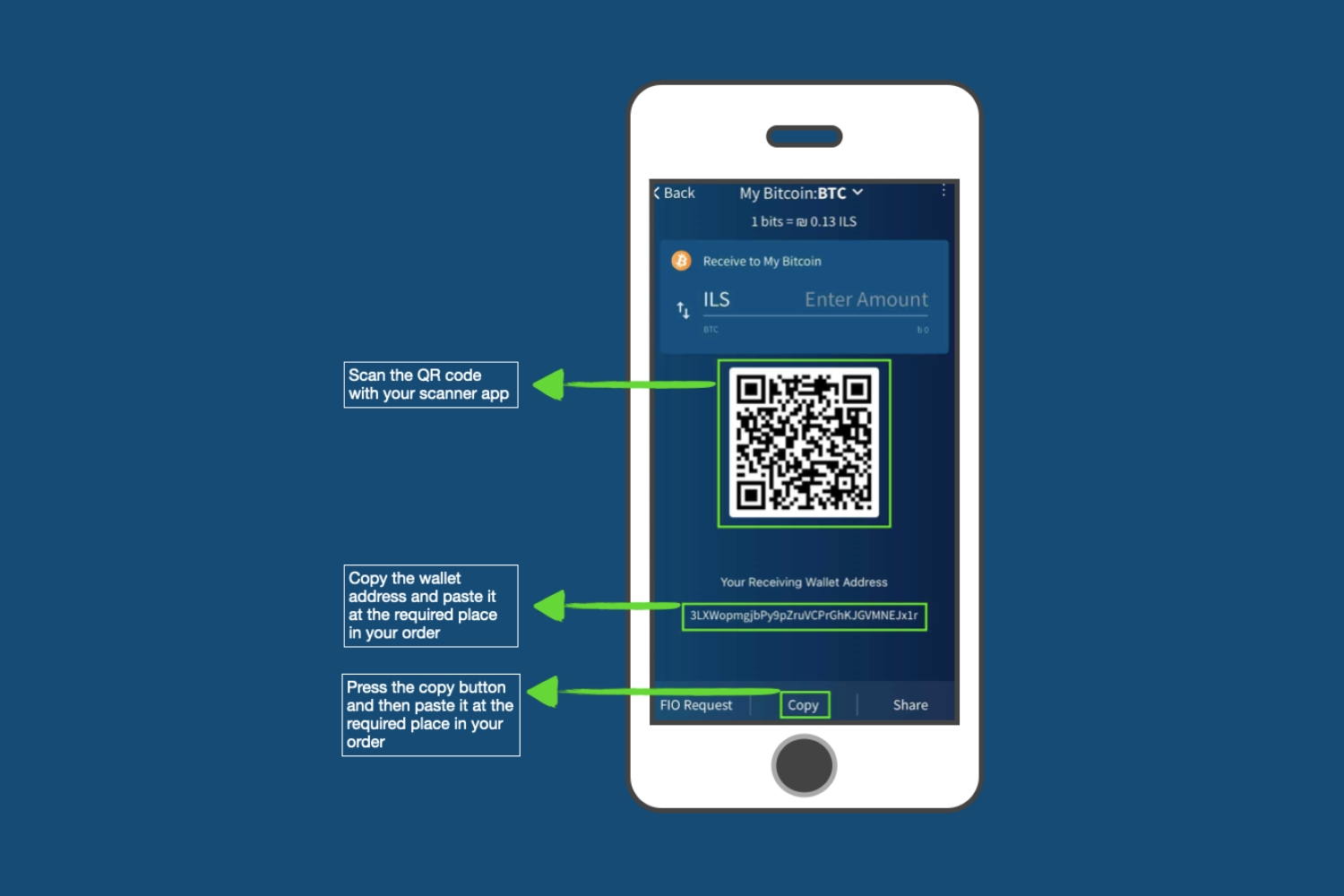Introduction
Cryptocurrencies have become increasingly popular in recent years, with Bitcoin leading the pack as the most well-known and widely used digital currency. As more and more individuals and businesses are embracing Bitcoin, the need to track and monitor Bitcoin transactions has grown. Whether you are a curious observer or a Bitcoin user yourself, being able to track a Bitcoin transaction can provide valuable insights into the movement of funds and the transparency of the Bitcoin network.
Tracking a Bitcoin transaction allows you to follow the flow of funds from one wallet to another. This can be particularly useful in verifying the legitimacy of a transaction, ensuring that the intended recipient has received the funds, or simply satisfying your curiosity about the movement of Bitcoins across the network.
In this article, we will explore different methods to track a Bitcoin transaction. We will guide you through using a Blockchain Explorer website, your Bitcoin wallet, and even mobile apps to monitor the progress of your transactions. Whether you are a beginner or an experienced Bitcoin user, these methods will help you gain a better understanding of Bitcoin transactions and their traceability.
It’s important to note that while Bitcoin transactions are generally considered anonymous, they are not completely untraceable. Bitcoin transactions are recorded on a public ledger known as the blockchain, which allows anyone to view transaction details and track funds across different addresses. However, the identities of the users behind these transactions are not readily accessible, providing a certain level of privacy and security.
So, if you’re ready to delve into the world of Bitcoin transactions and learn how to track them, let’s get started!
What is a Bitcoin Transaction?
Before diving into how to track a Bitcoin transaction, it’s essential to understand what exactly a Bitcoin transaction is. In simple terms, a Bitcoin transaction is the transfer of Bitcoin from one wallet address to another.
To put it in perspective, imagine you want to send money to a friend electronically. Instead of using a traditional bank, you choose to use Bitcoin. In this scenario, you would create a Bitcoin transaction to transfer a certain amount of Bitcoin from your wallet to your friend’s wallet.
Each Bitcoin transaction consists of essential components, namely:
- Input: This refers to the Bitcoin that is being spent or sent in the transaction. It typically comes from previous transactions or newly mined coins.
- Output: This is the destination wallet address where the Bitcoin will be sent.
- Transaction ID: Also known as the TXID, it is a unique identifier for the transaction that allows you to track and locate it on the blockchain.
- Transaction Fee: Bitcoin transactions often require a small fee to be paid in order to prioritize them on the network and ensure quicker confirmations.
Bitcoin transactions are verified and recorded on the blockchain, a decentralized and distributed ledger maintained by a network of computers known as miners. These miners use powerful computers to solve complex mathematical problems, which in turn validates and verifies transactions, ensuring their integrity and security.
It’s important to note that Bitcoin transactions are irreversible, meaning once a transaction is included in a block and added to the blockchain, it cannot be undone. This irreversible nature makes Bitcoin transactions secure and well-suited for various use cases, such as online purchases, remittances, and investment transactions.
In the next sections, we will explore different methods to track Bitcoin transactions, which will help you gain visibility into the status and progress of your transactions. Whether you’re a novice or an experienced user, understanding how to track Bitcoin transactions will give you confidence and peace of mind in managing your digital assets.
Why would you want to track a Bitcoin Transaction?
Tracking a Bitcoin transaction can serve several purposes and provide valuable insights into the movement of funds within the Bitcoin network. Here are a few reasons why you might want to track a Bitcoin transaction:
- Verification: By tracking a Bitcoin transaction, you can verify its authenticity. This can be particularly useful when receiving funds from someone or confirming that a payment has been made to a specific recipient. Tracking ensures that you have received the expected amount and that the transaction has been successfully processed.
- Security: Tracking enables you to monitor the movement of your Bitcoins and detect any unauthorized or fraudulent activity. If you notice any unexpected transactions or suspicious movements, you can take immediate action to secure your funds and protect your digital assets.
- Transparency: The Bitcoin blockchain is a public ledger, meaning that anyone can view transaction details. By tracking a Bitcoin transaction, you can gain a transparent view of the flow of funds between different wallet addresses. This transparency promotes trust and ensures accountability within the Bitcoin network.
- Confirmation: Tracking allows you to follow the progress of a transaction and monitor its confirmation status. Bitcoin transactions require confirmations from miners to be deemed valid and secure. By tracking the number of confirmations, you can estimate the level of security and finality of the transaction.
- Curiosity: Tracking can satisfy your curiosity about how Bitcoin transactions work and how funds move within the network. It enables you to explore the decentralized nature of cryptocurrencies and deepens your understanding of the technology behind Bitcoin.
Whether you’re a Bitcoin user, an investor, or simply interested in the world of cryptocurrencies, tracking Bitcoin transactions provides valuable information and insights. It allows you to stay informed, secure your funds, verify transactions, and contribute to the overall transparency and integrity of the Bitcoin network.
In the following sections, we will explore different methods to track Bitcoin transactions. Whether you choose to use a Blockchain Explorer website, your Bitcoin wallet, or a mobile app, these methods will equip you with the necessary tools to monitor and keep track of your Bitcoin transactions effectively.
How to track a Bitcoin Transaction using the Blockchain Explorer
A Blockchain Explorer is a powerful tool that allows you to view and track Bitcoin transactions on the blockchain. It provides a user-friendly interface to access transaction details, monitor the movement of funds, and explore the entire transaction history of Bitcoin.
Here is a step-by-step guide on how to track a Bitcoin transaction using a Blockchain Explorer:
- Step 1: Gather information about the transaction
Before you can track a Bitcoin transaction, you need to gather some information about the transaction itself. This includes the transaction ID (also known as the TXID), which is a unique identifier assigned to every Bitcoin transaction. You can typically find this information from the sender or through your Bitcoin wallet. - Step 2: Use a Blockchain Explorer website
Open your preferred Blockchain Explorer website. There are several options available, such as Block Explorer, Blockchain.com, and Bitpay Insight. Choose one that suits your preferences. - Step 3: Enter the transaction details
Locate the search or “Search” bar on the Blockchain Explorer website. Enter the transaction ID you gathered in Step 1 into the search field and initiate the search. - Step 4: Track and monitor the transaction
The Blockchain Explorer will display the transaction details, including the sender and recipient addresses, the amount transferred, and the number of confirmations the transaction has received. You can track the progress of the transaction and monitor any updates or additional confirmations as they occur.
Using a Blockchain Explorer provides you with a comprehensive view of the transaction, allowing you to verify its authenticity, check the status, and view the transaction history. It is a convenient and reliable method to track Bitcoin transactions.
In the next sections, we will explore alternative methods to track Bitcoin transactions, including using your Bitcoin wallet and mobile apps. Each method offers its unique advantages and may be more suitable for different users and preferences.
Step 1: Gather information about the transaction
Before you begin tracking a Bitcoin transaction using a Blockchain Explorer, you need to gather some essential information about the transaction itself. This information will help you locate and monitor the specific transaction on the blockchain.
The most crucial piece of information you need is the transaction ID, also known as the TXID. A transaction ID is a unique identifier assigned to every Bitcoin transaction. It serves as a digital fingerprint that distinguishes one transaction from another on the blockchain. You can obtain the transaction ID from the sender of the transaction or by checking your Bitcoin wallet’s transaction history.
To locate the transaction ID in your Bitcoin wallet, follow these steps:
- Desktop Wallets: Open your Bitcoin wallet software or application. Look for the transaction history section, which will display a list of all your recent transactions. Locate the specific transaction you want to track and note down its transaction ID.
- Web Wallets: Log into your web-based Bitcoin wallet and navigate to the transaction history section. Find the transaction you want to track and record its transaction ID.
- Mobile Wallets: Open your Bitcoin wallet app on your mobile device. Access the transaction history or activity tab within the app to find the desired transaction. Copy or take note of the transaction ID.
- Exchange Wallets: If the transaction in question was conducted through a cryptocurrency exchange, log into your exchange account. Locate the transaction history or withdrawal/deposit section, and find the specific transaction. Retrieve the transaction ID from there.
Once you have the transaction ID, you are ready to proceed to the next step and track the Bitcoin transaction using a Blockchain Explorer. Note that the transaction ID is case-sensitive, so it is essential to enter it accurately to ensure the successful tracking of the transaction.
By gathering the necessary transaction information at the beginning, you can avoid any delays or confusion during the tracking process. With the transaction ID in hand, you can now move forward with confidence and track the Bitcoin transaction using a Blockchain Explorer.
In the following steps, we will guide you through using a Blockchain Explorer website, entering the transaction details, and monitoring the transaction’s progress. Whether you’re a beginner or an experienced Bitcoin user, these steps will help you track and trace Bitcoin transactions effectively.
Step 2: Use a Blockchain Explorer website
Once you have gathered the necessary information about the Bitcoin transaction, such as the transaction ID, you can proceed to the next step, which is to use a Blockchain Explorer website. A Blockchain Explorer is an online tool or website that allows you to search and explore the Bitcoin blockchain, view transaction details, and track the progress of specific transactions.
There are several Blockchain Explorer websites available, each offering a user-friendly interface and a range of features. Some popular options include Block Explorer, Blockchain.com, and Bitpay Insight. Choose the one that suits your preferences, and let’s move on to the next step.
To use a Blockchain Explorer website, follow these steps:
- Open your preferred Blockchain Explorer website: Launch your web browser and navigate to the Blockchain Explorer website you have chosen.
- Locate the search or “Search” bar: Look for a search bar or a prominent search feature on the Blockchain Explorer website. Typically, it will be located at the top of the page.
- Enter the transaction details: Enter the transaction ID you obtained in Step 1 into the search or “Search” bar. Make sure to enter the transaction ID accurately, including any uppercase or lowercase letters, as it is case-sensitive.
- Initiate the search: Once you have entered the transaction ID, initiate the search by clicking on the search button or pressing “Enter.” The Blockchain Explorer will start retrieving the transaction information from the Bitcoin blockchain.
After initiating the search, the Blockchain Explorer will display the results, which will include the transaction details and other relevant information. This information may vary depending on the specific Blockchain Explorer you are using, but it usually includes the sender and recipient addresses, the timestamp of the transaction, the amount transferred, and the number of confirmations received.
At this point, you have successfully used the Blockchain Explorer website to locate and retrieve the details of the Bitcoin transaction. You can now proceed to the next step and track the transaction’s progress or explore the transaction history further.
Using a Blockchain Explorer is a convenient and efficient method to track Bitcoin transactions. It allows you to access real-time information about your transactions and gain insight into the movement of funds within the Bitcoin network. However, if you prefer to track transactions directly from your Bitcoin wallet or using a mobile app, don’t worry, we will cover those methods in the following sections.
Step 3: Enter the transaction details
Now that you have accessed a Blockchain Explorer website, it’s time to enter the transaction details to retrieve the specific Bitcoin transaction you want to track. This step is crucial in ensuring accurate and targeted results for monitoring the progress of your transaction.
To enter the transaction details into the Blockchain Explorer, follow these steps:
- Locate the search or “Search” field: Look for the search or “Search” bar on the Blockchain Explorer website. It is usually prominently displayed and easy to identify.
- Enter the transaction ID: Copy or manually enter the transaction ID you obtained in Step 1 into the search or “Search” field. Be careful to input the transaction ID correctly, paying attention to any uppercase or lowercase letters. The transaction ID is a unique identifier that helps the Blockchain Explorer locate the specific transaction you want to track.
- Initiate the search: Once you have entered the transaction ID, activate the search by clicking the search button or pressing “Enter.” The Blockchain Explorer will begin retrieving the transaction information from the Bitcoin blockchain.
After initiating the search, the Blockchain Explorer will process the transaction details and provide you with comprehensive information about the specific Bitcoin transaction. This information includes the sender’s address, the recipient’s address, the transaction amount, the transaction fee, the timestamp of the transaction, and the number of confirmations received.
By accurately entering the transaction details into the Blockchain Explorer, you ensure that you retrieve the specific transaction you want to track and monitor. This step is essential for accurately monitoring the progress, confirmations, and other important details of your Bitcoin transaction.
Now that you have successfully entered the transaction details into the Blockchain Explorer, you can move on to the next step and begin tracking the transaction’s progress. The Blockchain Explorer provides you with real-time updates and insights into the movement of funds within the Bitcoin network, allowing you to stay informed and ensure the successful completion of your transaction.
If you prefer alternative methods to track a Bitcoin transaction, such as using your Bitcoin wallet or a mobile app, don’t worry. We will explore those methods in the upcoming sections to offer you a range of options to suit your preferences.
Step 4: Track and monitor the transaction
After entering the transaction details into the Blockchain Explorer, you are now ready to track and monitor the progress of your Bitcoin transaction. This step allows you to stay up to date with the transaction’s status, confirmations, and any relevant updates.
To track and monitor the transaction using the Blockchain Explorer, follow these steps:
- Verify transaction details: Take a moment to review the transaction details displayed on the Blockchain Explorer. Confirm that the sender and recipient addresses, transaction amount, and other relevant information correspond to what you expected.
- Check the number of confirmations: The Blockchain Explorer will show you the current number of confirmations the transaction has received. Confirmations represent the number of blocks added to the blockchain since the transaction occurred. The more confirmations a transaction has, the more secure and finalized it becomes.
- Monitor confirmations: Keep an eye on the number of confirmations as they increase over time. The higher the number of confirmations, the more secure and immutable the transaction becomes. It’s essential to be patient, as Bitcoin transactions may take some time to receive a sufficient number of confirmations, especially during periods of network congestion.
- Track the transaction’s progress: The Blockchain Explorer may provide additional information and updates about the transaction as it progresses. This may include the transaction being included in a new block or any changes to the transaction’s status. Stay vigilant and follow any updates provided by the Blockchain Explorer.
By tracking and monitoring the transaction, you can ensure its successful completion and gain peace of mind. You will have real-time visibility into the movement of funds, the security of the transaction, and the confirmation status within the Bitcoin network.
Remember that the tracking process may vary slightly depending on the specific Blockchain Explorer website you are using. Some platforms offer additional features and information, such as transaction graphs, transaction history, and even visualization tools for a more comprehensive understanding of the transaction’s journey.
By actively tracking and monitoring your Bitcoin transaction using the Blockchain Explorer, you can stay informed, detect any anomalies or delays, and ensure the integrity of your transaction. This level of transparency and oversight is one of the key advantages of using cryptocurrencies like Bitcoin.
Now that you have successfully tracked and monitored the progress of your Bitcoin transaction using the Blockchain Explorer, you have gained valuable insights into its security, confirmations, and overall status. If you prefer, you can explore alternative methods to track Bitcoin transactions, such as using your Bitcoin wallet or a mobile app, which we will cover in the following sections to offer you more options and flexibility in tracking your transactions.
How to track a Bitcoin Transaction using a Bitcoin Wallet
Tracking a Bitcoin transaction using your Bitcoin wallet allows you to conveniently monitor the progress of your transactions directly from the wallet interface. Most Bitcoin wallets provide transaction history and tracking functionalities, making it easy to keep tabs on your transfers. Here’s a step-by-step guide on how to track a Bitcoin transaction using a Bitcoin wallet:
- Step 1: Open your Bitcoin Wallet
Launch your Bitcoin wallet software or mobile application. Make sure you are logged into your wallet account, as you’ll need access to the transaction history. - Step 2: Locate the transaction history
Find the transaction history tab or section within your Bitcoin wallet. The location may vary depending on the wallet you are using, but it is typically labeled as “Transactions” or “History.” - Step 3: Search for the specific transaction
Scroll through the transaction history to locate the specific transaction you want to track. Depending on the wallet, you may be able to search for the transaction using filters such as transaction ID, date, or wallet address involved. - Step 4: Monitor the transaction’s progress
Once you have found the transaction, your Bitcoin wallet will display relevant details, including the sender and recipient addresses, the transaction amount, and the number of confirmations received. You can monitor the progress of the transaction, keeping an eye on the number of confirmations as they increase over time.
By tracking the transaction in your Bitcoin wallet, you have a convenient and familiar interface to monitor the progress and status of your Bitcoin transfers. You can easily access transaction details and stay up to date with the confirmation process.
It’s important to note that the extent of tracking functionalities may vary depending on the wallet you are using. Some wallets may provide additional features, such as push notifications or real-time updates, while others may present a more basic transaction history.
With the ability to track Bitcoin transactions directly from your wallet, you have greater control and oversight of your transfers. You can confidently verify the completion of payments, ensure the accuracy of transactions, and have peace of mind knowing that your funds are securely moving through the Bitcoin network.
In the following sections, we will explore other methods to track Bitcoin transactions, including using mobile apps dedicated to tracking Bitcoin transfers. These methods offer alternative ways to stay informed about your transactions and provide flexibility in monitoring your Bitcoin activity.
Step 1: Open your Bitcoin Wallet
To track a Bitcoin transaction using your Bitcoin wallet, the first step is to open your wallet application or software. Your Bitcoin wallet serves as your digital hub for storing, sending, and receiving Bitcoin. Opening your wallet will give you access to the necessary tools and features to track and monitor your transactions.
The specific process for opening your Bitcoin wallet may vary based on the software or application you are using. Here are a few common methods for opening your Bitcoin wallet:
- Desktop Wallets: If you are using a desktop-based Bitcoin wallet like Bitcoin Core or Electrum, you can open the wallet by double-clicking on the application icon. This will launch the wallet software and bring you to the main dashboard of your wallet.
- Mobile Wallets: For mobile wallets like Coinbase, Trust Wallet, or Breadwallet, find the installed application on your smartphone and tap on the icon to launch it. Depending on your device, the wallet app may be located on your home screen or in your app drawer.
Ensure that you are connected to the internet when opening your Bitcoin wallet so that it can retrieve the most up-to-date information about your transactions.
Once you have successfully opened your Bitcoin wallet, you will typically be prompted to enter your wallet’s security credentials, such as a PIN, password, or biometric authentication (e.g., fingerprint or facial recognition). This step adds an extra layer of security to protect your wallet and its contents.
By opening your Bitcoin wallet, you gain access to the features and functionality needed to track and monitor your Bitcoin transactions. You’re now ready to proceed to the next step and locate the transaction history within your Bitcoin wallet.
It’s important to note that various Bitcoin wallets may have different user interfaces and designs. If you are unsure about how to open your specific Bitcoin wallet, referring to the wallet’s documentation or contacting their customer support can provide you with the necessary guidance.
In the upcoming step, we will explore how to locate the transaction history within your Bitcoin wallet. Stay tuned to learn how to track your Bitcoin transactions seamlessly.
Step 2: Locate the transaction history
Once you have successfully opened your Bitcoin wallet, the next step in tracking a Bitcoin transaction is to locate the transaction history within your wallet. The transaction history section is where you can access information about past transactions, including the specific transaction you want to track.
The process of locating the transaction history may vary depending on the Bitcoin wallet you are using. However, most wallets have a dedicated section or tab specifically for transaction history, making it easy to find and navigate. Here’s how to locate the transaction history in different types of Bitcoin wallets:
- Desktop Wallets: In desktop wallet software such as Bitcoin Core or Electrum, usually, there is a “Transaction” or “History” tab located in the main dashboard or navigation menu. Clicking on this tab will take you to the transaction history section where you can view all your past Bitcoin transactions.
- Mobile Wallets: For mobile wallets like Coinbase, Trust Wallet, or Breadwallet, find the “Transactions” or “History” section within the app. This section is typically accessible from the main screen or via a menu icon (three lines or dots) that opens a sidebar or dropdown menu.
Once you have located the transaction history section, you will be presented with a list of your past Bitcoin transactions in chronological order, from the most recent to the oldest. Each transaction entry will contain details such as the transaction amount, the date and time of the transaction, and the wallet addresses involved (sender and recipient).
If your Bitcoin wallet supports filters or search functionality, you can use them to quickly locate the specific transaction you want to track. You may be able to search by transaction ID, date range, or the wallet address associated with the transaction.
Remember, the location and design of the transaction history section may vary depending on the wallet you are using. If you are having trouble finding the transaction history in your specific wallet, consult the wallet’s documentation or reach out to their customer support for assistance.
Now that you have successfully located the transaction history within your Bitcoin wallet, you are ready for the next step: searching for the specific transaction you want to track. Continue reading to learn how to retrieve the details of your desired Bitcoin transaction from the wallet’s transaction history.
Step 3: Search for the specific transaction
After locating the transaction history within your Bitcoin wallet, the next step in tracking a Bitcoin transaction is to search for the specific transaction you want to track. By entering the necessary details, such as the transaction ID or recipient address, you can quickly locate and retrieve the desired transaction from the wallet’s transaction history.
To search for a specific transaction in your Bitcoin wallet, follow these steps:
- Review the transaction history: Take a moment to review the list of transactions in the transaction history section of your Bitcoin wallet. This will give you a general idea of the transactions that have taken place within your wallet.
- Identify the transaction: Locate the specific transaction you want to track. This can be done by searching for the transaction ID that you obtained from the sender or by identifying the recipient address associated with the transaction.
- Use search functionality: If your Bitcoin wallet provides search functionality, utilize it to quickly find the specific transaction. Enter the transaction ID or the recipient’s wallet address that is associated with the transaction into the search bar provided. This will filter the transaction history and display only the relevant transaction.
- Retrieve the transaction details: Once you have successfully located the specific transaction, your Bitcoin wallet will display relevant details such as the transaction amount, transaction date, sender and recipient addresses, and any fees associated with the transaction.
By searching for the specific transaction in your Bitcoin wallet, you can quickly retrieve and view its details. This gives you real-time information about the transaction, such as its status, the number of confirmations it has received, and the wallet addresses involved.
It’s important to note that the search functionality and options for locating transactions may vary depending on the Bitcoin wallet you are using. Some wallets may provide more advanced search features, allowing you to filter by date ranges, transaction types, or additional criteria.
Now that you have successfully located and retrieved the specific transaction from your Bitcoin wallet’s transaction history, you are ready to move on to the next step: monitoring the transaction’s progress. Continue reading to learn how to monitor the status and confirmations of your Bitcoin transaction directly from your wallet.
Step 4: Monitor the transaction’s progress
After searching for and locating the specific transaction in your Bitcoin wallet, the final step is to monitor the progress of the transaction. Monitoring the transaction’s progress allows you to stay informed about its status, the number of confirmations it has received, and any updates related to the transaction.
To monitor the progress of your Bitcoin transaction, follow these steps:
- Verify transaction details: Take a moment to review the transaction details displayed by your Bitcoin wallet. Confirm that the sender and recipient addresses, transaction amount, and any additional information match your expectations.
- Check the number of confirmations: Your Bitcoin wallet will typically display the current number of confirmations received by the transaction. Confirmations indicate the number of blocks added to the blockchain since the transaction was initiated. The more confirmations a transaction has, the more secure and irreversible it becomes.
- Monitor additional updates: Some Bitcoin wallets may provide additional updates about the transaction’s progress. These updates could include when the transaction is included in a block or if there are any changes to the status of the transaction.
- Track the transaction’s progress: Keep an eye on the number of confirmations as they increase over time. This process may take some time, especially during periods of high network activity. It’s important to be patient and allow sufficient time for confirmations to accumulate.
By monitoring the progress of your Bitcoin transaction, you can have real-time visibility into its status and confirmations. The number of confirmations serves as an indicator of the security and finality of the transaction, providing reassurance that your funds have been successfully transferred.
It’s important to note that the monitoring process may differ slightly depending on the Bitcoin wallet you are using. Some wallets may offer push notifications or real-time updates, allowing you to receive notifications when the transaction reaches a certain number of confirmations or experiences significant updates.
Now that you have successfully tracked and monitored the progress of your Bitcoin transaction using your Bitcoin wallet, you can stay well-informed about the status and security of your transaction. Whether you are sending or receiving Bitcoin, monitoring the progress of your transactions brings peace of mind, ensuring a smooth and reliable transfer of funds.
In the previous steps, we explored how to use your Bitcoin wallet to track and monitor Bitcoin transactions. However, if you prefer an alternative method for tracking Bitcoin transactions, such as using a mobile app dedicated to tracking, we will cover that in the following section, providing you with more options to suit your preferences and needs.
How to track a Bitcoin Transaction using a Mobile App
Tracking a Bitcoin transaction using a mobile app provides a convenient and portable way to monitor the progress of your transactions on the go. With a dedicated Bitcoin tracking app installed on your smartphone, you can easily access transaction details, receive real-time updates, and stay informed about the movement of your Bitcoin funds. Here’s a step-by-step guide on how to track a Bitcoin transaction using a mobile app:
- Step 1: Download a Bitcoin Tracking App
Visit the app store on your mobile device and search for Bitcoin tracking apps. Choose a reputable and well-reviewed app that suits your needs. Popular options include Blockfolio, CoinStats, and Delta. - Step 2: Open the app and navigate to the tracking section
Once you have downloaded and installed the Bitcoin tracking app, launch it on your mobile device. Explore the app’s interface and look for the section dedicated to tracking Bitcoin transactions. - Step 3: Enter the transaction details
In the tracking section of the app, you will usually find a search or input field. Enter the necessary transaction details, such as the transaction ID or the recipient’s Bitcoin address associated with the transaction. - Step 4: Monitor the transaction’s progress
The app will retrieve the transaction details from the blockchain and display them to you. You can now monitor the progress of the transaction in real-time. The app may provide information such as the number of confirmations, transaction fees, and current status.
By using a dedicated Bitcoin tracking app, you have access to a user-friendly interface specifically designed for tracking transactions. It not only allows you to monitor individual transactions but also provides an overview of your complete Bitcoin portfolio and market data.
It’s worth noting that different Bitcoin tracking apps may offer varying features and functionalities. Some apps may include additional features like portfolio management, price alerts, and news updates to keep you well-informed about the Bitcoin market.
Tracking Bitcoin transactions through a mobile app provides convenience, allowing you to monitor your transactions wherever you are. You can stay in control of your Bitcoin funds, track the progress of your transfers, and ensure their successful completion while having all the information at your fingertips.
In the previous sections, we explored various methods to track Bitcoin transactions, including using a Blockchain Explorer, your Bitcoin wallet, and mobile apps. By utilizing these methods, you can gain valuable insights into the movement of funds, verify transactions, and have a comprehensive view of your Bitcoin activity. Each method has its own advantages and suitability, allowing you to choose the most suitable approach based on your preferences and requirements.
Step 1: Download a Bitcoin Tracking App
To track a Bitcoin transaction using a mobile app, the first step is to download a reputable Bitcoin tracking app from your device’s app store. Bitcoin tracking apps provide a convenient way to monitor the progress and details of your Bitcoin transactions on your smartphone. Here’s how to get started:
- Choose a Bitcoin tracking app: Open your device’s app store, such as the Apple App Store or Google Play Store, and search for Bitcoin tracking apps. Look for apps that have high ratings, positive reviews, and a good track record. Some popular Bitcoin tracking apps include Blockfolio, CoinStats, and Delta.
- Download and install the app: Select the Bitcoin tracking app that best suits your needs and tap the download button. Wait for the app to download and install on your device. This process may take a few moments, depending on your internet speed.
- Open the app: Once the Bitcoin tracking app has been installed, locate its icon on your device’s home screen or app drawer. Tap on the app icon to open it.
By downloading a Bitcoin tracking app, you gain access to a dedicated platform that specializes in tracking and providing information about Bitcoin transactions. These apps often offer additional features such as portfolio management, real-time market data, and price alerts, allowing you to manage your Bitcoin holdings effectively.
When choosing a Bitcoin tracking app, it’s essential to consider factors such as user reviews, features, ease of use, and security. Reading reviews and doing some research will help ensure that you select a reliable and trustworthy app that meets your requirements.
One advantage of using a Bitcoin tracking app is that it is typically designed with a user-friendly interface specifically tailored for tracking transactions on mobile devices. This makes it easy to navigate through the app’s features and access the information you need to monitor the progress of your Bitcoin transactions.
Now that you have successfully downloaded and installed a Bitcoin tracking app, you’re ready to move on to the next step: opening the app and navigating to the section where you can track your Bitcoin transactions. This will allow you to enter the transaction details and monitor the progress of your Bitcoin transactions directly from your mobile device.
Step 2: Open the app and navigate to the tracking section
Once you have downloaded and installed a Bitcoin tracking app on your mobile device, the next step is to open the app and navigate to the section dedicated to tracking Bitcoin transactions. This section will allow you to enter transaction details and monitor the progress of your Bitcoin transactions directly from the app’s interface. Here’s how to proceed:
- Locate the app’s icon: Find the icon of the Bitcoin tracking app on your device’s home screen or in the app drawer. Tap on the app’s icon to open it.
- Explore the app’s interface: Once the app is open, familiarize yourself with the different sections and features it offers. Look for tabs, menus, or icons that correspond to transaction tracking or transaction history.
- Navigate to the tracking section: Depending on the app’s design, you might find the tracking section under titles such as “Transactions,” “History,” “Tracking,” or a similar label. Tap on the appropriate section to access the transaction tracking feature.
The user interface and navigation pathways can vary among Bitcoin tracking apps. Some apps may have a simple, streamlined interface, while others offer more advanced functionality and customization options. Spend some time familiarizing yourself with the app’s layout and navigation to ensure a smooth user experience.
Once you have successfully reached the tracking section within the app, you will be ready to enter the necessary transaction details and begin monitoring the progress of your Bitcoin transactions. The tracking section will allow you to access real-time data, view transaction details, and receive updates on the status and confirmations of your transactions.
It’s worth noting that some Bitcoin tracking apps offer additional features beyond transaction tracking, such as portfolio management, price alerts, and news updates. These features can provide valuable insights and enhance your overall Bitcoin tracking experience.
Now that you have opened the Bitcoin tracking app and navigated to the tracking section, you’re ready to proceed to the next step: entering the transaction details. Continue reading to learn how to enter the necessary information and effectively track your Bitcoin transactions within the app.
Step 3: Enter the transaction details
After opening the Bitcoin tracking app and navigating to the tracking section, the next step is to enter the transaction details to begin tracking your Bitcoin transactions. By providing the necessary information, such as the transaction ID or recipient address, you can effectively monitor the progress and status of your transactions. Follow these steps to enter the transaction details:
- Locate the input field: Look for an input field or search bar within the tracking section of the app. This is where you can enter the transaction details to initiate the tracking process. The input field is typically labeled with instructions or placeholders.
- Fill in the transaction details: Depending on the app’s interface and functionality, you may be asked to enter various transaction details, such as the transaction ID, recipient Bitcoin address, or even a unique identifier provided by the app. Fill in the required information accurately.
- Submit the transaction details: Once you have entered the transaction details, submit the information to start the tracking process. This may involve tapping on a search button, pressing Enter on your device’s keyboard, or using a similar action to initiate the search and retrieval of the transaction data.
After entering the transaction details and submitting the information, the Bitcoin tracking app will retrieve the relevant data related to your transaction from the blockchain. This may include the sender and recipient addresses, transaction amount, transaction status, and the number of confirmations received.
It’s important to ensure that you enter the transaction details accurately, especially the transaction ID or recipient address. Any errors can result in the app retrieving incorrect or unrelated transaction information, leading to inaccurate tracking and monitoring.
Bitcoin tracking apps offer user-friendly interfaces designed to simplify the process of entering transaction details. Some apps may offer additional functionalities, such as QR code scanning for transaction identification, saving previous transactions for quicker access, or even automatic tracking of transactions associated with your wallet address.
Now that you have successfully entered the transaction details, you’re ready to monitor the progress and status of your Bitcoin transaction within the tracking section of the app. In the following step, we will explore how to effectively monitor the transaction’s progress and stay updated on any relevant changes or confirmations.
Step 4: Monitor the transaction’s progress
Once you have entered the transaction details into the Bitcoin tracking app, the final step is to monitor the progress of your Bitcoin transaction. This step allows you to stay updated on the status, confirmations, and any changes related to your transaction. Here’s how to effectively monitor the transaction’s progress:
- Review the transaction details: Take a moment to review the transaction details displayed by the Bitcoin tracking app. Verify that the sender and recipient addresses, transaction amount, and other pertinent information match your expectations.
- Check the number of confirmations: The Bitcoin tracking app should provide information about the number of confirmations received by the transaction. Confirmations indicate the number of blocks that have been added to the blockchain since the transaction was initiated. The more confirmations a transaction has, the more secure and irreversible it becomes.
- Stay updated on changes: Some Bitcoin tracking apps offer real-time updates about the transaction’s progress. This can include notifications when the transaction receives new confirmations or if any status changes occur. Enable notifications in the app’s settings to receive these updates in a timely manner.
- Track additional information: Beyond the number of confirmations, the app may provide other useful information, such as the transaction’s fee, timestamp, or the current block height. Monitor this information to gain insights into the transaction’s progress.
By monitoring the progress of your Bitcoin transaction, you can have real-time visibility into its status and security. The number of confirmations serves as an indicator of the transaction’s reliability, ensuring that funds have been successfully sent or received.
Bitcoin tracking apps may also offer additional features, such as transaction graphs or charts, historical data, or the ability to add notes or labels to specific transactions. These features can further enhance your tracking experience and provide a comprehensive overview of your Bitcoin activity.
It’s worth noting that the monitoring process may differ slightly depending on the Bitcoin tracking app you are using. Some apps may provide more detailed information, customizable settings, or additional insights into your Bitcoin transactions.
Now that you have successfully monitored the progress of your Bitcoin transaction using the tracking app, you can stay informed about its status, confirmations, and any updates. Whether you’re sending or receiving Bitcoin, this monitoring process ensures reliable and secure transactions while maintaining a comprehensive and up-to-date record.
In the earlier steps, we explored various methods to track Bitcoin transactions, including using a Blockchain Explorer, your Bitcoin wallet, and mobile apps. By utilizing these methods, you gain valuable insights into the movement of funds, verify transactions, and have a comprehensive view of your Bitcoin activity. Each method has its own advantages and ensures seamless tracking based on your preferences and requirements.
Conclusion
Tracking a Bitcoin transaction is essential for verifying its progress, ensuring its security, and gaining insights into the movement of funds within the Bitcoin network. Whether you choose to use a Blockchain Explorer, your Bitcoin wallet, or a dedicated mobile app, tracking offers valuable information and peace of mind.
Using a Blockchain Explorer allows you to access the transaction details for any Bitcoin transaction by searching for the transaction ID. You can track its progress, monitor the number of confirmations, and gain transparency into the sender and recipient addresses. This method is reliable and offers a comprehensive view of Bitcoin transactions.
If you prefer to track Bitcoin transactions using your Bitcoin wallet, you can access the transaction history section to find and review specific transactions. This method is convenient, as it allows you to track within a familiar interface and provides real-time information about the transaction’s progress and confirmations.
Alternatively, using a dedicated Bitcoin tracking app offers a portable and user-friendly solution. Such apps provide features like transaction tracking, portfolio management, and real-time market data. They grant you the flexibility to monitor your Bitcoin transactions on the go.
Regardless of the method you choose, tracking Bitcoin transactions helps verify the authenticity of transfers, detect any discrepancies, ensure the security of your funds, and gain a deeper understanding of the Bitcoin network’s transparency.
It’s important to note that while tracking Bitcoin transactions provides valuable insights, it does not compromise the pseudonymous nature of the Bitcoin network. The identities of users remain private, but the transaction details, such as addresses and amounts, are visible on the public blockchain.
With the knowledge and step-by-step guidance provided in this article, you can confidently track your Bitcoin transactions, ensuring smooth and secure transfers within the decentralized Bitcoin network. So, whether you are a curious observer or an active participant in the world of cryptocurrencies, tracking Bitcoin transactions empowers you with valuable information and control over your digital assets.

























